
|
Design, Technology , and Engineering benefitting individuals
with disabilities and older adults in the local community |
February 5, 2020 |
|
|
|
|

Perspectives is the newsletter of the
Stanford course,
Perspectives in Assistive
Technology.
The Design and Control of
Exoskeletons for Rehabilitation
This issue invites you to attend the next class session and
encourages your participation in the course's Assistive Technology
Faire.
|
Perspectives in Assistive
Technology is a Winter Quarter Stanford course - entering its
fourteenth year - that explores the design, development, and use of
assistive technology that benefits people with disabilities and older adults.
It consists of semi-weekly classroom discussions; lectures by
notable professionals, clinicians, and assistive technology users; tours
of local medical, clinical, and engineering facilities; student project
presentations and demonstrations; an Assistive Technology Faire; and a
film screening. |
Next class session -
Thursday, February 6th at 4:30pm
|
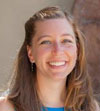
|
The Design and Control of
Exoskeletons for Rehabilitation
Katherine
Strausser, PhD
Ekso Bionics - Principal
Controls Engineer |
Abstract: "Robots once
were a dream of the future, but they now creep into all aspects of our lives,
whether it be vacuuming our house or exploring distant planets. Rehabilitation
and mobility are no different. Exoskeletons can provide the motion and support
that a user cannot, supplementing or replacing their muscles to enable natural
motion. These devices can be used for mobility or for rehabilitation, but both
uses come with challenges. I will discuss the design and control of robotic
exoskeletons and the challenges faced when designing these devices."
Biosketch: Katherine
Strausser holds a Bachelor's degree from Carnegie Mellon University and a
Master's and PhD from the University of California, Berkeley. She was one of
three primary inventors of Ekso 1, an electro-mechanical lower extremity
exoskeleton and is currently a senior controls engineer at Ekso Bionics working
on control algorithms and software for various research efforts focusing on the
Human Machine Interface.
|
You are invited to attend this
and all other class sessions - Class sessions will be held on
Tuesdays and Thursdays from 4:30 to 5:50pm and are
open to the greater Stanford community. You need not be a Stanford student to
attend, no signup is required, and there is no charge. The full schedule can be
found here |
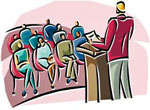 |
|
|
Same classroom! -
The course will be held in classroom 282 in the
Lathrop
Library located at the corner of Lasuen Mall and Serra Mall, adjacent to
Memorial Auditorium and the Oval. It seats as many as 150 people in a flexible
and accessible space. Here is a webpage with maps, directions, and photos. |
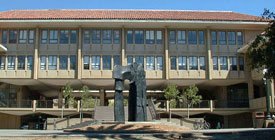 |
|
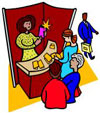
You are invited
to participate in the Assistive Technology Faire - This
eighth annual course event will provide an opportunity for students and
community members to get an up-close look at a variety of assistive technology
devices and learn about available services. Users of assistive technology
products as well as small companies and agencies serving
individuals with disabilities and older adults are encouraged to bring
assistive technology devices and information to display, demonstrate, and
discuss. Please browse to the Call for Assistive
Technology Faire Participants webpage and contact me if you would like to
be a part of this event as a user or vendor of assistive technology products or
services. Everyone is welcome to attend the Faire.
The Faire will start at 4:30pm on
Thursday, February 20th in the
Lathrop Library, Classroom 282.
Here is the program,
slides, and
Matteo's,
Krystina's &
my photos from last year's
Faire. |
Upcoming class sessions:
Ongoing local event:
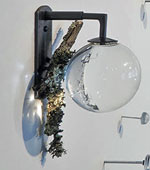
SOMArts proudly announces the second
exhibition in the 10th Curatorial Residency season. Curated by Vanessa Chang
and Lindsey D. Felt, Recoding CripTech reimagines enshrined notions of
what a body can be or do through creative technologies, and how it can move,
look, or communicate.
Working with a broad understanding of
technology, from prosthetic tools to the built environment, this
multidisciplinary community art exhibition explores how disability - and
artists who identify as such - can redefine design, aesthetics, and the
relationship between user and interface. Exhibiting artists engage with
technology in manifold ways from conception to production and beyond. As the
term "crip" reclaims the word for disability culture and recognizes disability
as a cultural and political identity, so too do artists hack technologies to
make them more accessible and inclusive.
|
Other
Support the
course - Funding in any amount for the course and student projects
is always welcomed. Monetary gifts support approved project expenses,
administrative costs, honoraria for guest lecturers, and the end-of-term
celebration. Refer to the Course and Project Support
webpage for more information.
Email
questions, comments, or suggestions - Please
email me if you have general
questions, comments, or suggestions regarding the course. Thank you again for
your interest.
Dave
|
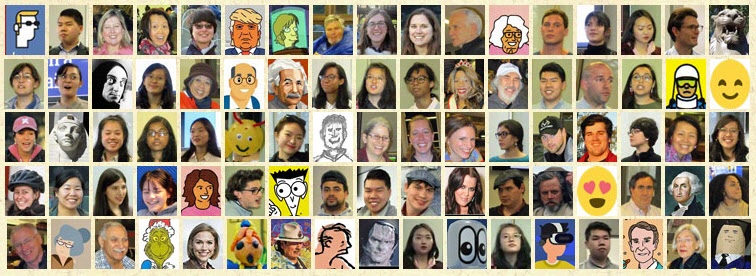
To unsubscribe from this newsletter, please email
Dave. |
|







